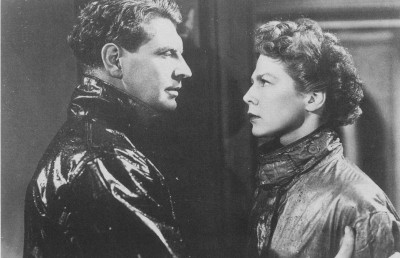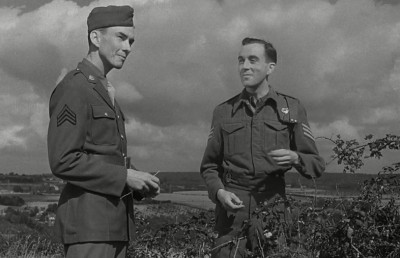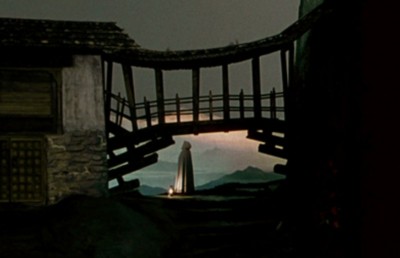The Woman in Black (2012) and Hammer has risen from the grave
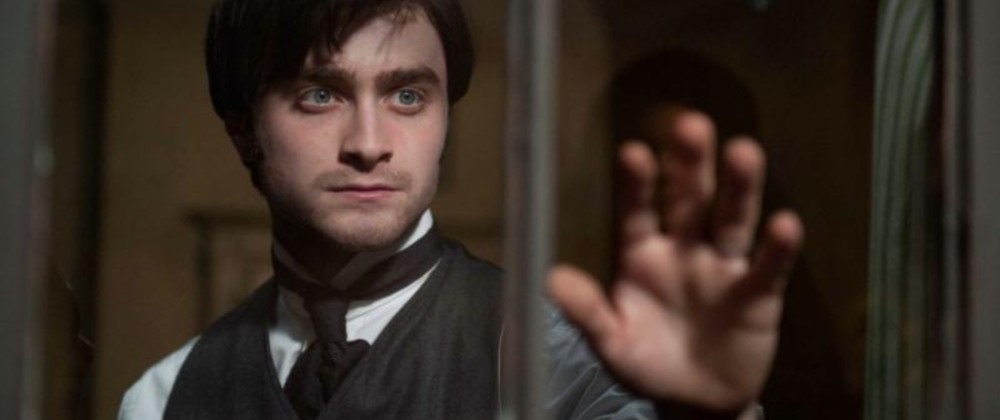
The Woman in Black, 2012 (from the director of the smart and tense hostage horror film Eden Lake, 2008, James Watkins) begins with the production company credits and HAMMER films logo in translucent red, through which you can see images of their past films. In the film’s lead Daniel Radcliffe is excellent as Arthur Kipps, the widower father of a young four year-old son sent to a desolate village location to go over what’s left of a woman’s belongings before the sale of the property. His task is complicated by the ghost of a woman in black haunting the village where the house resides. The villagers are very anxious to see the back of Kipps because the local legend has it that every time the woman is seen, one of the local children dies an awful death. Kipps is befriended by the local squire Daily, played ably by Ciaran Hinds, who helps him solve the mystery (the details of which I’ll leave for you to discover, as this is not the point of this overview).
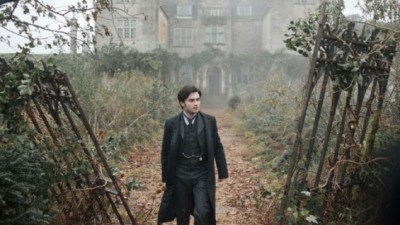
For any Hammer aficionado who believed the Hammer spirit was destroyed long ago, be prepared for a re-birth of unexpected proportions. The Woman in Black reeks of a Gothic attachment to the old Hammer films of the 60’s so much so that it is no longer a film about a local haunting, but a film haunted by a mythical past which has been sacrosanct since its demise in the 80’s, with only a few television series’ to keep the name alive. Over the years since, the name Hammer has been sold and bought a few times with the idea of reviving its productions; even Hollywood producer/director Richard Donner, who was a fan, failed to garner capital to do it. The name Hammer seemed to have been forgotten except for a fervent fan base which had grown aware of itself via the boundary-less internet.
The one person who had taken it upon himself to be the keeper of the Hammer Films flame, Richard Klemenson, kept the torch burning over the decades with the infrequent publication of his magazine devoted to the production house, Little Shop of Horrors; thanks to him, the spirit of Hammer has been kept alive. When Hammer was bought again by Dutch film producer, John De Mol, the large fan base had become used to the idea of failed revival attempts. However, things did seem to be moving again when actual production reigns were handed to Simon Oakes and Marc Schipper; Beyond the Rave appeared as an on-line series to test the market waters of anything to do with Hammer; it even featured an appearance by Ingrid Pitt (of Vampire Lovers and Countess Dracula fame) to whet the appetite of any remaining Hammer fans. The film and storyline were poor and missed what the fans really wanted from Hammer: a true gothic experience, the likes of which Hammer were experts at producing –though I sometimes wonder if the early Hammer really knew what it was they had in their midst.
The new Hammer tried again with The Wake Wood and The Resident; both films eschewing current trends of what defined the ultra-violent contemporary horror film. Hammer then took a big risk in buying the property rights to a small Swedish film titled Let the Right One In (Låt den rätte komma in, 2008). They assigned Cloverfield director, Matt Reeves to bring the remake, entitled Let Me In (2010), to the screen. Cinephiles who had loved the original were outraged that such an endeavour could even be considered since the original film seemed flawless in every respect; how could it be “dumbed” down for a North American audience, thereby ruining its intelligent and controversial story? Hammer managed to score on all counts with this particular remake, which many people claimed was in some ways as good if not better than the original. David Jenkins in the Time Out London review writes of the Hammer remake,
Some members of the horror cognoscenti have not been charmed by this new version, but I felt this film trumped the original in a number of ways, notably by tapping in to deeper and more obscure emotions concerning the ways in which a child would interpret romantic attraction. It also urges us to question whether the bond between these youngsters is love, or something more sinister and domineering. It’s also interesting that Reeves – unlike Alfredson – opts to make Abby’s victims anonymous, so we’re not invited to sympathise with her just because she’s killing unlikeable characters: if anything, it makes her situation all the more tragic. But perhaps the new film’s greatest coup is that it refuses to romanticise childhood loneliness, framing these troubled tweens as a product of their estrangement rather than cute nonconformists blazing a violent trail.
Tom Shone of the The Telegraph, UK writes,
The vampire flick ‘Let Me In’ is yet another glossy Hollywood reworking of a classy European film. But – hold on to your hats – it’s better than the original. Well, it had to happen some day…
Drat. Another fine chance to pillory Hollywood for its philistinism thwarted. It was looking like a sure thing, too. Almost anybody who chanced across Tomas Alfredson’s 2008 film Let The Right One In, about a boy and a vampire in suburban Stockholm, knew that they were on to something rich and strange — the kind of vampire movie Ingmar Bergman might have made had he been that way inclined. So when the news came that Hollywood was going to remake it, everyone blanched. This was going to be bad. Without doubt. In uncertain times, this would be one rock on which we could all find anchor. Instead, the film came out in the United States last month to glowing reviews; a rare instance of a remake that is as good as, if not better than, the original, they said. Stephen King himself called it the “best American horror film in the last 20 years”.
The argument of which is better becomes irrelevant since both have their own qualities that do not cancel the other out; now that Hammer had finally brought a contemporary vampire film to the screen, how long would it take them to show their true lineage…the Gothic film?
Not long. The dawn of 2012 to be exact, with The Woman in Black being a true Hammer gothic as we have come to love them. What is particularly interesting with these current new Hammers is the attention to detail in the look and spirit of the film; the art direction, the slow camera movements and the economy of the editing. The art direction and design of Eel Marsh House could have come from previous Hammer designer Bernard Robinson circa 1962-65. In an old Hammer film, it would be customary to walk in to a castle and have stairs to the right or left of the entrance that would lead to a second floor walkway, which would cross the hall from right to left or vice versa; as it is in this film. For any fan of Hammer, this film will reward multiple viewings, simply to get the design ghosts out of the way so that you can follow the “story” ghosts as well; I was so busy being haunted by various camera angles and outside views of the main house that I lost track of the actual story.
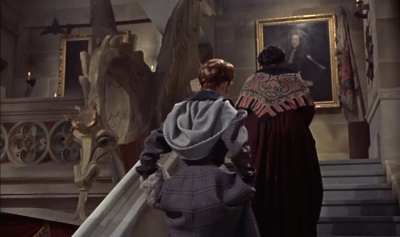
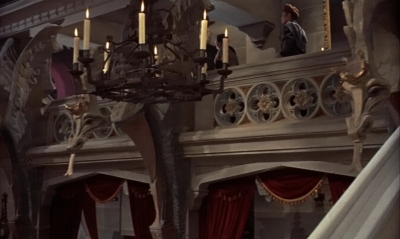
The Brides of Dracula
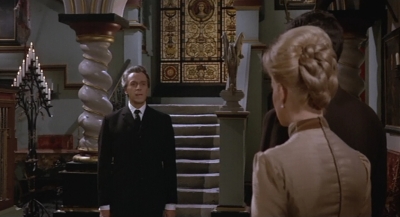
Kiss of the Vampire
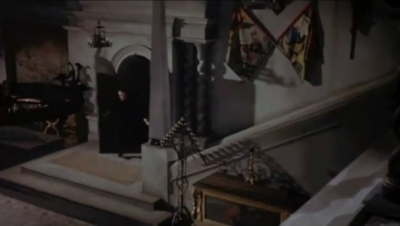
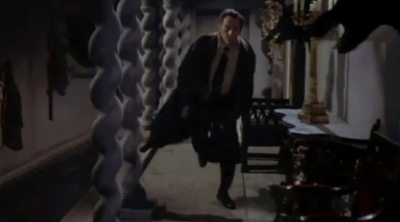
Horror of Dracula (Lee at door, Cushing running on Landing)
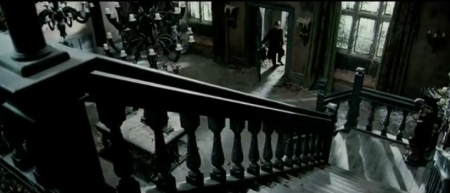
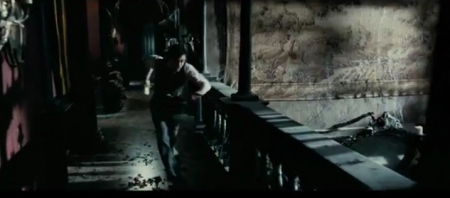
Radcliffe in Woman in Black
Is this new Hammer the same as the old Hammer? Was it ever? Hammer was a banner behind which Sir James Carrera and Anthony Hinds and Brian Lawrence produced a myriad of film subjects; somehow in 1955-56, they touched a nerve in the British public with their adaptations of the Quatermass radio plays which surprised them, and got them thinking along the lines of perhaps trying to revive the old Universal monsters that had been so popular back in the `30s. They really did not know exactly what all this was going to achieve, and the meeting of the various talents that were ultimately to create these films happened by pure chance. The Hammer directors found this out by the sheer popularity of the films they were making and how well they were selling in foreign markets such as Asia and the U.S. They tried to assign the same team of filmmakers to the remakes of Dracula and Mummy (not to mention various others) and keep the production lines going, as it were, to maximize profit. The elements of Bray studios, Black Park for location work, producers Hinds and Sir James`s son Michael ensured somewhat of a continuity in feel and atmosphere from film to film. Ultimately, the fear of tampering with a winning formula led them down a road of repetition with slight variants of sex and nudity as the 70`s came around; the British film industry at that point had given up the ghost (at least for that period).
The new Hammer, with Simon Oakes (who seems to have the spirit of Tony Hinds in him), doesn`t seem headed for the same re-threads. The films they have made so far are quite original and some unique adaptations of previously published material. They are currently going through a huge restoration program (with the help of STUDIO CANAL) of some of the Hammer library`s most cherished films. They have even set up a website to keep fans informed of their progress which can be found here.
Are the Hammer fans happy about this? Well you need only seek out THE HAMMER LOVERS group on Facebook to find out. I think this Hammer Films Productions recent activity would make Michael Carreras truly proud.
Bibliography
Jenkins, David. “Let Me In.” Time Out London. Issue 2098: 4 – 10 November, 2010.
Shone, Tom. “Let Me In: the curse of the remake.” The Telegraph. October 29, 2010.



